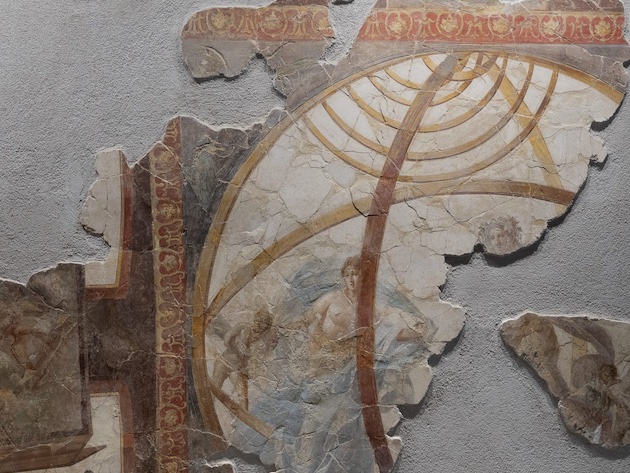
The exhibition Copernicus and the revolution of the world at the Curia Iulia in the Roman Forum, promoted and created by the Colosseum Archaeological Park and curated by Alfonsina Russo, Jurek Miziolek, Francesca Ceci and Daniele Fortuna, is part of the celebrations for the 550th anniversary of birth of Nicholas Copernicus (1473-1543), Polish astronomer and mathematician who changed the vision of the cosmos forever with his revolutionary theories which placed the sun at the centre of the universe.
The exhibition itinerary is divided into three sections: Copernicus and the ancients; Copernicus in Italy; Copernicus' admirers and his legend and intends to explore the imaginary world originating from the Copernican revolution and its ancient roots, solar iconography, Copernicus' stay in Rome in 1500 and the great influence that the heliocentric theory had. In this regard, the important role played by our country in the education of Copernicus is underlined, who, after studying in Krakow, continued his studies and research in many Italian cities, including Bologna, Padua and Ferrara, as well as in Rome where he spent a relevant period for his researches.
Many works are on display, such as the marble bas-relief representing the Sol Invictus from the Capitoline Museums next to a replica of Galileo's telescope on loan from the Galileo museum in Florence; or the marble celestial Globe with the Zodiac, from the 3rd century. AD, from the Vatican Museums, located near the Triumph of Truth, canvas by Luigi Mussini, from the Academy of Fine Arts of Brera, or the fresco with Apollo Citaredo from the 1st century BC. of the Palatine Museum.
The exhibition also makes use of multimedia projections created by None Collective, in which parallels are compared and drawn between the great Polish astronomer and other brilliant minds both from antiquity, such as Pythagoras and Aristotle, Aristarchus of Samos and Ptolemy, and from the modern, like Tycho Brahe, Kepler, Galileo and Newton.
The twenty-three works on display come from fourteen lending museums, including the Capitoline Museums, the Pilotta monumental complex, the National Archaeological Museum of Naples, the Galileo Museum of Florence, the Astronomical and Copernican Museum of the INAF-Astronomical Observatory of Rome, the Krakow Stained Glass Museum.
The exhibition, which is the result of collaboration between Italy and Poland, is accompanied by a booklet in Italian and English with texts by the curators Jurek Miziolek and Francesca Ceci.
Photo credits: courtesy of the Colosseum Archaeological Park official site
Informations
21 October 2023 - 29 January 2024
The exhibition in the Curia Iulia of the Roman Forum is visible during regular opening hours, from Saturday to Monday.
Opening hours:
until 28 October - Saturday, Sunday, and Monday - from 9.30 am to 5.00 pm (last admission at 4.30 pm);
from 29 October - Saturday, Sunday, and Monday - from 9.30 am to 4.00 pm (last admission at 3.30 pm).
 Condividi
Condividi











































